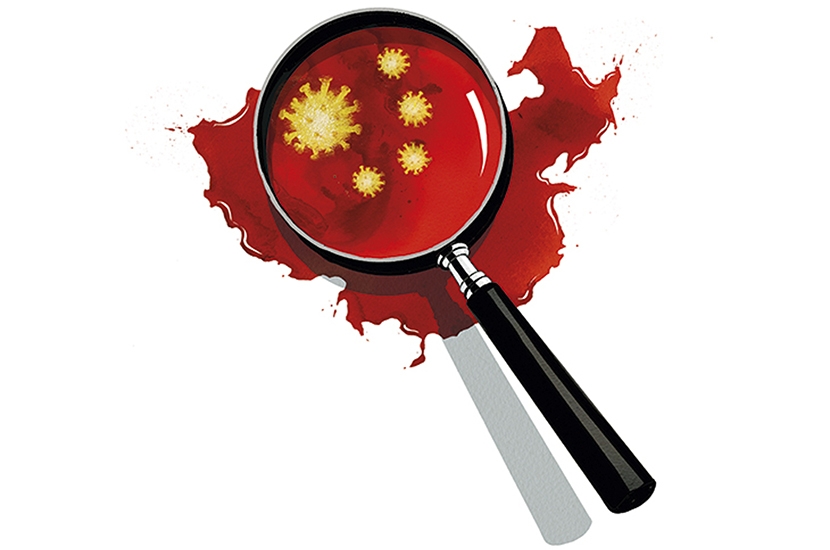The good doctors
Sir: Not all GPs are currently ‘Dr No’ (12 June). I phoned my surgery at 9.30 the other day, expecting to be told the doctor would phone me back in three days’ time, only to be given a face-to-face appointment for 11.30. Everything seemed normal there, apart from the face masks and open windows, and the doctor gave me nearly half an hour of her time. On another occasion when I requested an urgent consultation, I was told to go straight round, and the GP gave me 40 minutes.
During the pandemic I have had one biopsy, two brain scans, two full-body scans, one chest scan, one heart scan, two eye scans and five dilation eye examinations, two x-rays, 16 blood tests, two urine tests, one ear syringe, and seen six consultants face-to-face. The NHS has certainly been there in my time of need, and it has been very much Dr Yes.
Graham Chainey
Brighton
Remember Pirbright
Sir: On 3 August 2007 an outbreak of foot-and-mouth disease was confirmed on a farm in Surrey. The following day the Pirbright laboratory of the Institute of Animal Health identified the strain, and went on to discover that Pirbright itself — the only known UK location of the strain — was the likely source. It was later concluded that the virus had most likely leaked out from drainage pipework at the Pirbright facility, contaminating the surrounding soil and then being carried from the site by vehicles. The Pirbright Institute is designated as the World Reference Laboratory for Foot-and-Mouth Disease. The agricultural community has not forgotten this, even if everyone sensible thought that talk of the Covid pandemic originating in a laboratory was pseudoscientific nonsense (‘Not so batty’, 29 May).
David Uren
Waterlooville, Hampshire
Spread the borage
Sir: Matthew Parris is, as ever, spot on in his world view and never more so than in his celebration of the maligned borage (‘On looking without seeing’, 19 June). An unsung hero of bees and beekeepers like myself, it produces the champagne of honeys and is unique in that each flower head can refill with nectar within two minutes of having been visited by a bee. Perhaps Matthew would like to join me in my quest to beautify the central reservations and hard shoulders of some of our highways by spreading some borage (easily done — you just chuck some seeds out of the window)? I’ve done the A3 down to Portsmouth and the M3 as far as Winchester. Perhaps Matthew could cover the A52 and his section of the M1?
Peter Smith
Guildford, Surrey
Or is it alkanet?
Sir: I loved Matthew Parris’s article, and hate to question him, but he may have mistaken green alkanet for borage. My garden has been awash for months with its heavenly blue starry flowers. The borage is only just appearing, in time to add to a glass of Pimm’s and pretend it’s summer. I am writing this on Midsummer’s Day in a downpour.
Anna Hoysted
Mattingley, Hants
Poor chickens
Sir: It is depressing to read for, I think, the third time in one of your editorials (‘Where’s the beef?’, 19 June) that the health fears over eating chlorinated chicken are nonsense. That isn’t the point. US farmers wash their chickens in chlorine to rid the carcasses of toxic micro-organisms which poor husbandry has allowed to thrive. The issue is one of animal welfare standards, not the nonexistent threat to human health.
Tim Cheatle
London E3
A meeting of poets
Sir: Michael Cullen (Letters, 12 June) is mistaken in saying that, awarded a travel scholarship, George Mackay Brown chose England but it wasn’t allowed. When the Society of Authors offered Brown the scholarship in 1968, he chose Ireland, and it was allowed. On this Irish trip he spent an evening with Seamus Heaney — an important meeting for both poets. ‘Our meeting in Belfast was short enough but very thrilling for me,’ Heaney later wrote to me, ‘because I honoured [Brown’s] work so much.’ Heaney remembered Brown, drink taken, offering a rendering of ‘The Four Marys’ — ‘a chanting more than a singing, and more a haunting than a chanting’. The next morning they went their separate ways, ‘but that meeting sealed the friendship’.
Maggie Fergusson
London W6
No way to die
Sir: A.N. Wilson (‘A dead cert’, 19 June) ignores some important aspects of dying from Covid-19. He does not take on board the horrible manner in which people die from the virus. Secondly, many die without the presence of their loved ones, which is so distressing for everyone. Thirdly, for the service of thanksgiving, only 40 people are allowed to attend to mourn. As many as would like to should be allowed to come along to bid their final farewell. As one who has conducted hundreds and hundreds of funerals, I wish we could have the celebration of life that we had before Covid.
The Revd Dr D. Ben Rees
Allerton, Liverpool
Matrimonial bliss
Sir: I have only belatedly caught up with Bernard Cornwell’s reference to Samuel Taylor Coleridge’s belief that the best marriages are between deaf men and blind women (Diary, 12 June). As my very short-sighted wife and my own hard-of-hearing self approach our 50th wedding anniversary this November, I am proud that we are living proof of the sage of Highgate’s perspicacity in matrimonial matters as well as in so many other human affairs.
Drew Clode
London N6






Comments